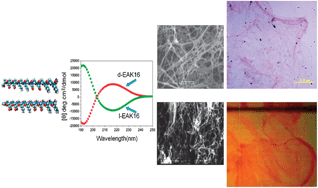Designer nanomaterials using chiral self-assembling peptide systems and their emerging benefit for society
Abstract
Chirality is absolutely central in chemistry and biology. The recent findings of chiral self-assembling peptides’ remarkable chemical complementarity and structural compatibility make it one of the most inspired designer materials and structures in nanobiotechnology. The emerging field of designer chemistry and biology further explores biological and medical applications of these simple D,L- amino acids through producing marvellous nanostructures under physiological conditions. These self-assembled structures include well-ordered nanofibers, nanotubes and nanovesicles. These structures have been used for 3-dimensional tissue cultures of primary cells and stem cells, sustained release of small molecules, growth factors and monoclonal antibodies, accelerated wound-healing in reparative and regenerative medicine as well as tissue engineering. Recent advances in molecular designs have also led to the development of 3D fine-tuned bioactive tissue culture scaffolds. They are also used to stabilize membrane proteins including difficult G-protein coupled receptors for designing nanobiodevices. One of the self-assembling peptides has been used in human clinical trials for accelerated wound-healings. It is our hope that these peptide materials will open doors for more and diverse clinical uses. The field of chiral self-assembling peptide nanobiotechnology is growing in a number of directions that has led to many surprises in areas of novel materials, synthetic biology, clinical medicine and beyond.


 Please wait while we load your content...
Please wait while we load your content...